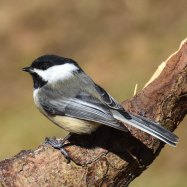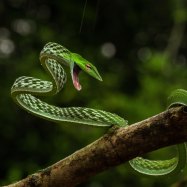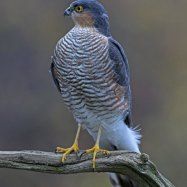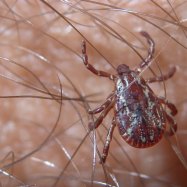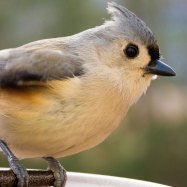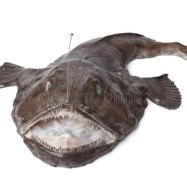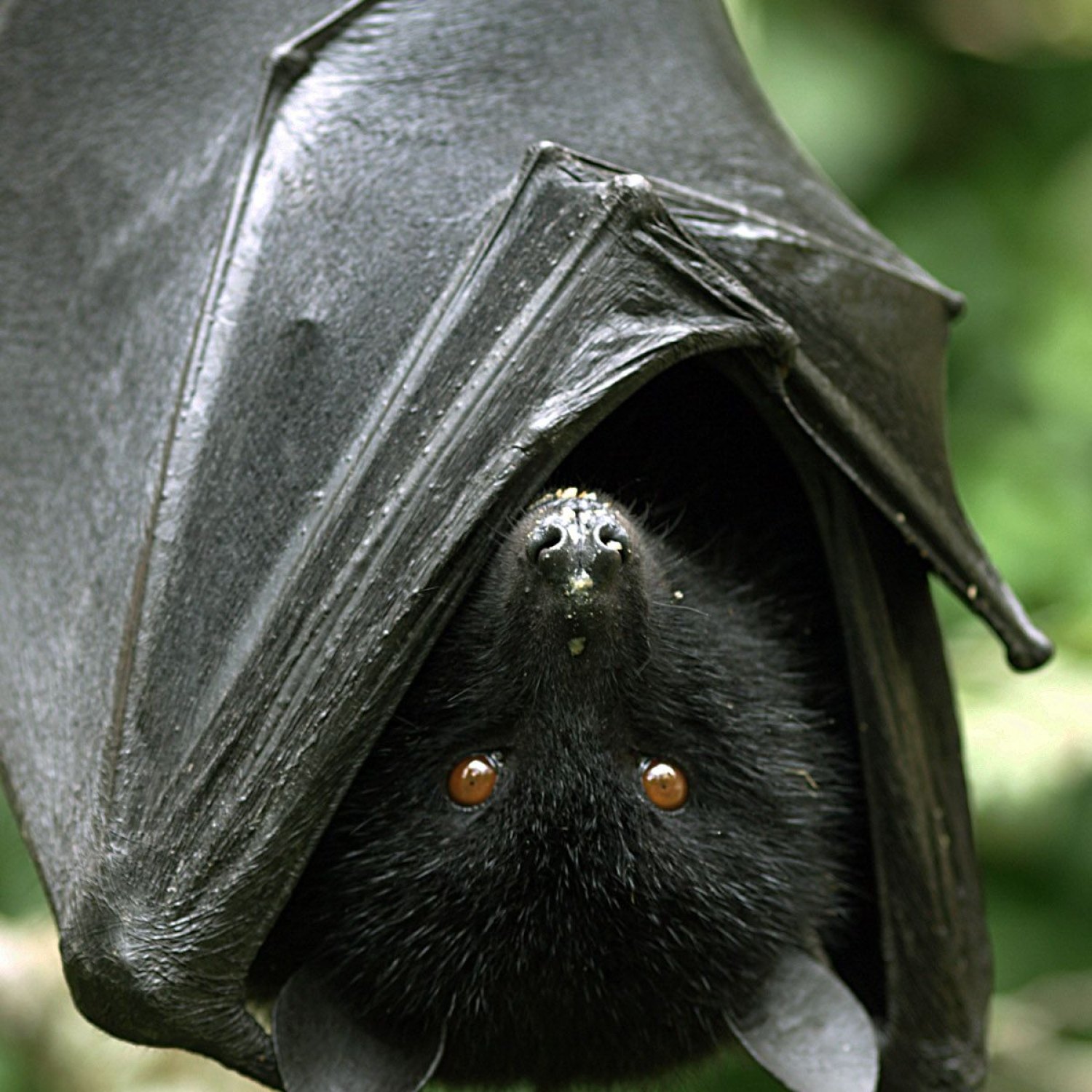
Fruit Bat
Varies, typically between 9 to 16 inches
Fruit bats, part of the Pteropodidae family, can be found hanging upside down in trees or roosting in caves. Their body shape is described as large and robust, with lengths varying between 9 to 16 inches. These fascinating creatures are undervalued pollinators and seed dispersers, playing a crucial role in maintaining balance in their ecosystems. #FruitBats #Pteropodidae #NatureFact
Animal Details Summary:
Common Name: Fruit Bat
Kingdom: Animalia
Habitat: Tropical and subtropical forests
The Fascinating World of Fruit Bats
In the animal kingdom, there are endless varieties of fascinating creatures. One such animal is the Fruit Bat, scientifically known as Pteropus. These incredible creatures have captured our attention and interest with their unique appearances, behavior, and lifestyle. In this article, we will explore the world of Fruit Bats and discover what makes them truly remarkable Fruit Bat.The Classification of Fruit Bats
Fruit Bats belong to the kingdom Animalia, the phylum Chordata, and the class Mammalia. They are also classified under the order Chiroptera, which includes all species of bats. Within the Chiroptera order, Fruit Bats belong to the family Pteropodidae. This family is one of the largest and most diverse groups of bats, with over 180 species. However, there is still much to learn about these elusive creatures, and new species are being discovered regularly.Geographical Distribution
Fruit Bats are found in different parts of the world, including Africa, Asia, and Australia. They have a wide geographical distribution and can be found in various countries across these continents. From the bountiful rainforests of Africa to the vibrant tropical forests of Asia, Fruit Bats have adapted to diverse environments and have thrived in their habitats. Some species of Fruit Bats are endemic to specific regions, while others have a more extensive range Formosan Mountain Dog.Habitat and Location
As the name suggests, Fruit Bats are primarily found in tropical and subtropical forests where fruit trees grow abundantly. They prefer to live in areas with a dense canopy cover and access to a water source. Fruit Bats are nocturnal creatures and spend their days resting in trees or caves, emerging at night to forage for food. They have a keen sense of smell and use it to locate their preferred food sources.Feeding Method
Fruit Bats are herbivores, meaning they feed on plants. Their diet consists mainly of fruits, nectar, and pollen. They have a unique way of eating, using their sharp teeth to bite into fruits and extract the juices. They often leave the pulp and seeds of the fruits behind, making them essential for seed dispersal and pollination in their ecosystems.An Incredible Body Shape
One of the most striking features of Fruit Bats is their large and robust body shape. Unlike other bat species, Fruit Bats have a muscular body and large wings. Their wingspans can reach up to five feet, making them one of the largest species of bats in the world. Despite their size, Fruit Bats are incredibly agile and can fly at high speeds, making them efficient hunters and escape artists.Variation in Coloration
Fruit Bats come in a variety of colors, including shades of brown, black, gray, and red. The exact coloration varies among different species and can also change with age. Some Fruit Bats have striking patterns on their wings, while others have a uniform color throughout their bodies. These varying colors help them blend into their surroundings and provide camouflage from predators.The Importance of Fruit Bats
Fruit Bats may not be as well-known as other species of bats, but they play a vital role in their ecosystems. As mentioned earlier, they are essential for seed dispersal and pollination of plants, which helps maintain the balance and diversity of their habitats. Additionally, their droppings, known as guano, are a valuable source of nutrients for plants and contribute to the growth of new vegetation. Fruit Bats also provide a food source for other animals, such as snakes and birds of prey, making them a crucial link in the food chain.Threats to Fruit Bats
Despite their important role in their ecosystems, Fruit Bats face various threats in the wild. Habitat loss due to deforestation and human development is a significant threat to their survival. Many Fruit Bat species are also hunted for their meat, which is considered a delicacy in some cultures. These factors, coupled with their slow reproductive rate and low numbers, make some species of Fruit Bats vulnerable to extinction.Conservation Efforts
Fortunately, there are ongoing efforts to protect and conserve Fruit Bat populations. Many organizations and researchers are studying these animals to better understand their behaviors, habitats, and needs. They also work to raise awareness about the importance of Fruit Bats and the threats they face. Some countries have also implemented laws and regulations to protect Fruit Bats and their habitats.In Conclusion
In conclusion, Fruit Bats are incredible creatures that have a significant impact on their ecosystems. From their unique appearances to their essential roles as pollinators and seed dispersers, they are truly fascinating animals. However, they face significant threats, and it is crucial to continue efforts to conserve and protect them for future generations to appreciate. Next time you spot a Fruit Bat in the wild, take a moment to admire its beauty and appreciate its vital role in our world.

Fruit Bat
Animal Details Fruit Bat - Scientific Name: Pteropus
- Category: Animals F
- Scientific Name: Pteropus
- Common Name: Fruit Bat
- Kingdom: Animalia
- Phylum: Chordata
- Class: Mammalia
- Order: Chiroptera
- Family: Pteropodidae
- Habitat: Tropical and subtropical forests
- Feeding Method: Herbivorous
- Geographical Distribution: Africa, Asia, and Australia
- Country of Origin: Various countries across Africa, Asia, and Australia
- Location: Trees and caves
- Animal Coloration: Varies, including shades of brown, black, gray, and red
- Body Shape: Large and robust
- Length: Varies, typically between 9 to 16 inches
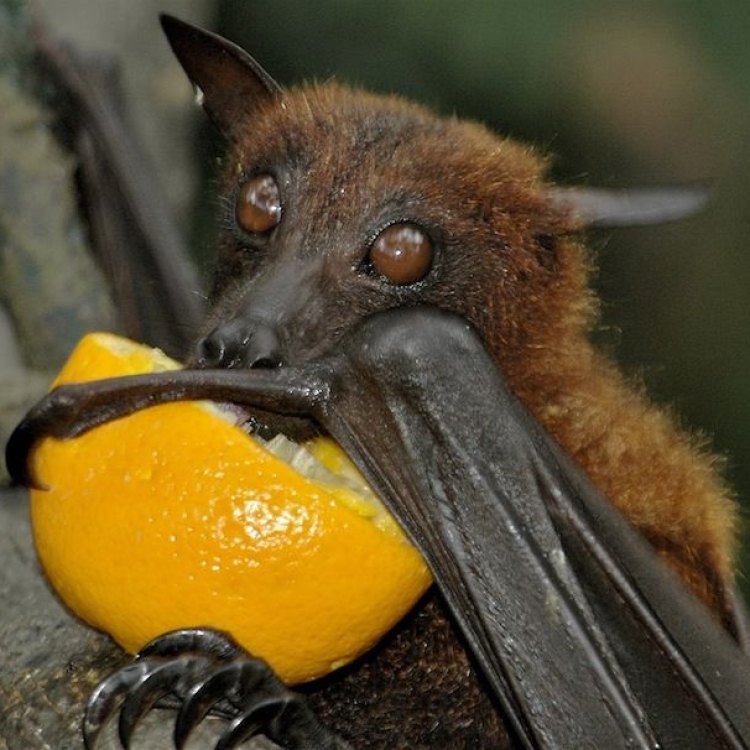
Fruit Bat
- Adult Size: Wingspan can range from 2 to 5.6 feet
- Average Lifespan: Up to 20 years
- Reproduction: Sexual
- Reproductive Behavior: Mating occurs in colonies with dominant males and harem-like structure
- Sound or Call: Vocalizations include screeches, clicks, and chirps
- Migration Pattern: Some species exhibit seasonal migration
- Social Groups: Colonial, living in large groups called colonies or camps
- Behavior: Nocturnal and agile flyers, roost during the day
- Threats: Habitat destruction, hunting, and persecution due to fear
- Conservation Status: Varies depending on the species, some are endangered
- Impact on Ecosystem: Important pollinators and seed dispersers
- Human Use: Fruit bats are consumed as food in some cultures, and their guano is used as fertilizer
- Distinctive Features: Large size, membranous wings, and elongated fingers
- Interesting Facts: Fruit bats play a crucial role in maintaining ecosystems by pollinating flowers and dispersing seeds
- Predator: Predators include large owls, snakes, and other nocturnal predators
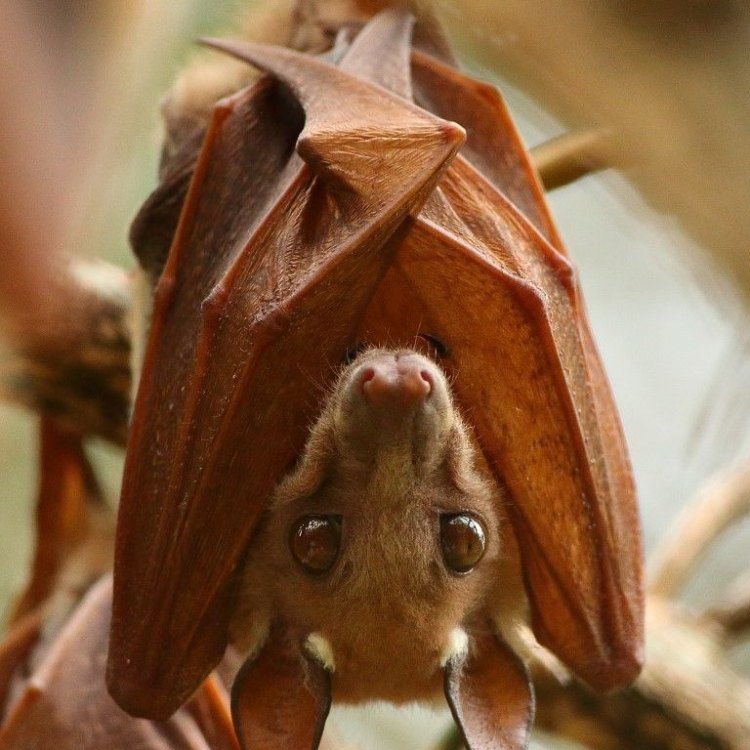
Pteropus
The Remarkable World of Fruit Bats: Pollinators, Seed Dispersers, and More
When we think of bats, we often imagine eerie creatures with sharp fangs and a thirst for blood. However, not all bats fit this stereotype. In fact, one group of bats, known as fruit bats, are anything but frightening. These fascinating creatures play a crucial role in maintaining our ecosystems and are known for their unique features and behaviors PeaceOfAnimals.Com. In this article, we will delve into the world of fruit bats and discover what makes them truly remarkable.One of the most distinctive features of fruit bats is their size. Depending on the species, their wingspan can range from 2 to 5.6 feet, making them one of the largest bat species in the world. They are also known for their elongated fingers and membranous wings, which allow them to fly with great agility and precision.
But size isn't the only impressive aspect of these bats. They also have an impressive lifespan, with some species living up to 20 years. This is quite remarkable for a creature of their size and food source.
Speaking of food, let's dive into the most intriguing aspect of fruit bats – their role as pollinators and seed dispersers Fish. Fruit bats feed on a wide variety of fruits, nectar, and pollen from flowers. As they move from one plant to another, they unintentionally transfer pollen, aiding in the pollination of flowers. This crucial role ensures the continuation of plant species and contributes to a diverse ecosystem.
But the benefits of fruit bats don't end there. As they feed on fruits, they also disperse seeds in their droppings, aiding in the spread of plant life. This is especially important in rainforests, where fruits and plants are crucial to the survival of many animal species.
In addition to their role in pollination and seed dispersal, fruit bats also have a significant impact on the ecosystem as a whole. Research has shown that these bats help control insect populations by feeding on insects that infest fruits and cause damage to crops. This natural pest control is beneficial for farmers and also reduces the use of harmful pesticides in agriculture.
However, despite their vital role in the ecosystem, fruit bats face numerous threats. Habitat destruction, hunting, and persecution due to fear are some of the biggest challenges facing these magnificent creatures. Deforestation and land development not only decrease the fruit bats' food source but also destroy their roosting sites, leading to a decline in their population.
Hunting of fruit bats for consumption also poses a significant threat to their survival. In some cultures, fruit bats are considered a delicacy and are hunted for their meat. This not only decreases their population but also disrupts their role in maintaining the ecosystem. Furthermore, due to the fear and misconception surrounding bats, they are often persecuted and killed for simply being near human settlements.
The conservation status of fruit bats varies depending on the species. Some are classified as endangered, while others are considered of least concern. However, the decline in their population is a cause for concern, and efforts are being made to protect and preserve these bats and their habitats.
So, what makes fruit bats unique, apart from their size and role in the ecosystem? Let's explore some of their distinctive behaviors and interesting facts.
Fruit bats are highly social animals, living in large groups called colonies or camps. They have a hierarchical social structure, with dominant males leading the colony and a harem-like structure for mating. Mating for fruit bats occurs in colonies, and females often choose the most dominant males to mate with, ensuring strong genes for their offspring.
These bats are also known for their vocalizations, which include screeches, clicks, and chirps. Scientists believe that these vocalizations are used for communication and navigation while flying through the dark night.
When it comes to their behavior, fruit bats are primarily nocturnal. They spend their days roosting in trees or caves, hanging upside down. During the night, they take flight to forage for food, displaying impressive agility and speed as they navigate through the darkness.
Some species of fruit bats also exhibit seasonal migration, flying hundreds or even thousands of miles to find food and suitable roosting sites. This behavior is essential for their survival, as it allows them to find food and avoid harsh weather conditions in their natural habitat.
Apart from their natural behaviors, fruit bats also have a significant impact on human culture. In some countries, such as Ghana, Papua New Guinea, and Palau, fruit bats are considered a delicacy and are consumed as food. They are often prepared by roasting, grilling, or cooking in stews. Additionally, their droppings, known as guano, are used as fertilizer in many agricultural areas, providing valuable nutrients for crops.
However, despite their benefits and valuable place in the ecosystem, fruit bats are often viewed with fear and mistrust, especially due to their association with diseases such as rabies and Ebola. While it is essential to take precautions and educate people about the safety measures around bats, it is also crucial to understand the vital role they play in maintaining our ecosystem.
In terms of predators, fruit bats face threats from larger owls, snakes, and other nocturnal predators. However, due to their agile flying skills and ability to roost in hard-to-reach places, they can often avoid these threats.
In conclusion, fruit bats are truly remarkable creatures that deserve our appreciation and protection. Their large size, membranous wings, and elongated fingers make them fascinating to observe, but it is their crucial role in pollination, seed dispersal, natural pest control, and importance in human culture that makes them truly unique. While they may face threats, it is essential to recognize and cherish their place in our ecosystem and work towards their conservation. Next time you see a fruit bat flying through the night sky, remember the remarkable role they play in maintaining our world.
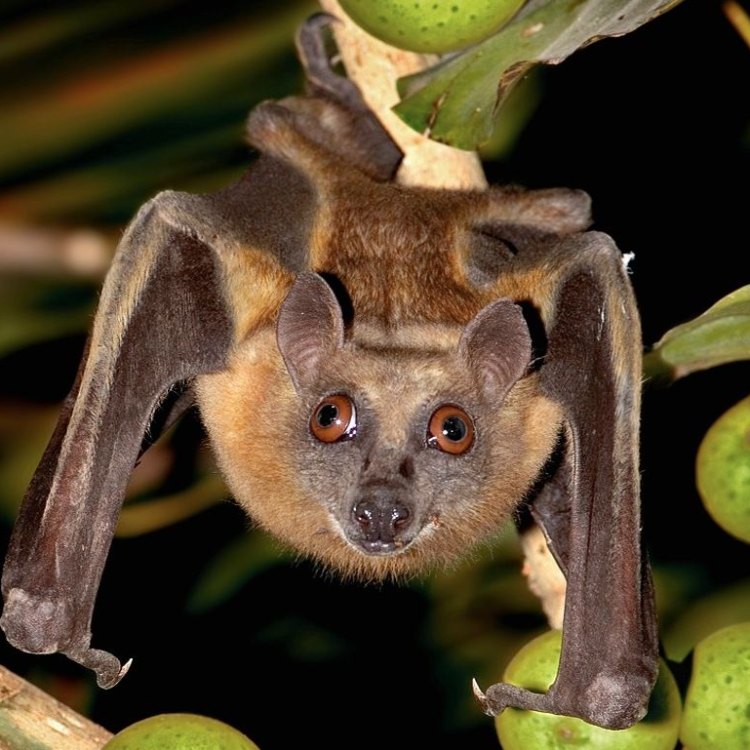
The Fascinating World of Fruit Bats
Disclaimer: The content provided is for informational purposes only. We cannot guarantee the accuracy of the information on this page 100%. All information provided here may change without prior notice.





